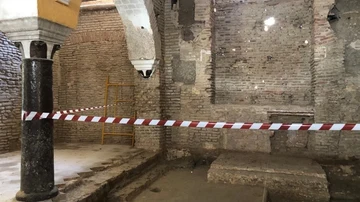Archaeological work carried out in a 15th century hospital in Utrera (Seville) has brought to light the most important synagogue complex of those found in the Iberian Peninsula, of which there were references by the historian Rodrigo Caro around the year 1604.
As reported at a press conference by the mayor of the town, José María Villalobos, the archaeological complex has seen the light after works started in November 2021 in the house known as ‘Niño Perdido’, where it was located. Mercy Hospital, of which Rodrigo Caro already mentioned that it was built on the remains of a synagogue.
The report presented by the mayor cites that “the stratigraphic study of the building’s walls allows us to propose the hypothesis that we are facing a synagogal complex that exceeds strict materiality of the prayer room”, and that everything found corroborates what was studied by the historian (1573-1647).

Villalobos has shown that conservation status “It is exceptional because, with the documented archaeological evidence, including its complete elevation, its original surface and volumetry can be restored.”
Initially, a first report has been developed, which indicates that new remains could be foundso that work will continue in the area, for now through the investment of municipal funds.
Parallel to the work, the City Council wants the works to be visited by all interested people, while work is being done in the synagogue bath area and the place for women.
The excavations have been carried out in a building that has had different uses throughout history, as a hospital, nursery, school, restaurant or party hall, until in 2016 it was acquired by the City Council.
Source: Lasexta
Bruce is a talented author and journalist with a passion for entertainment . He currently works as a writer at the 247 News Agency, where he has established himself as a respected voice in the industry.












